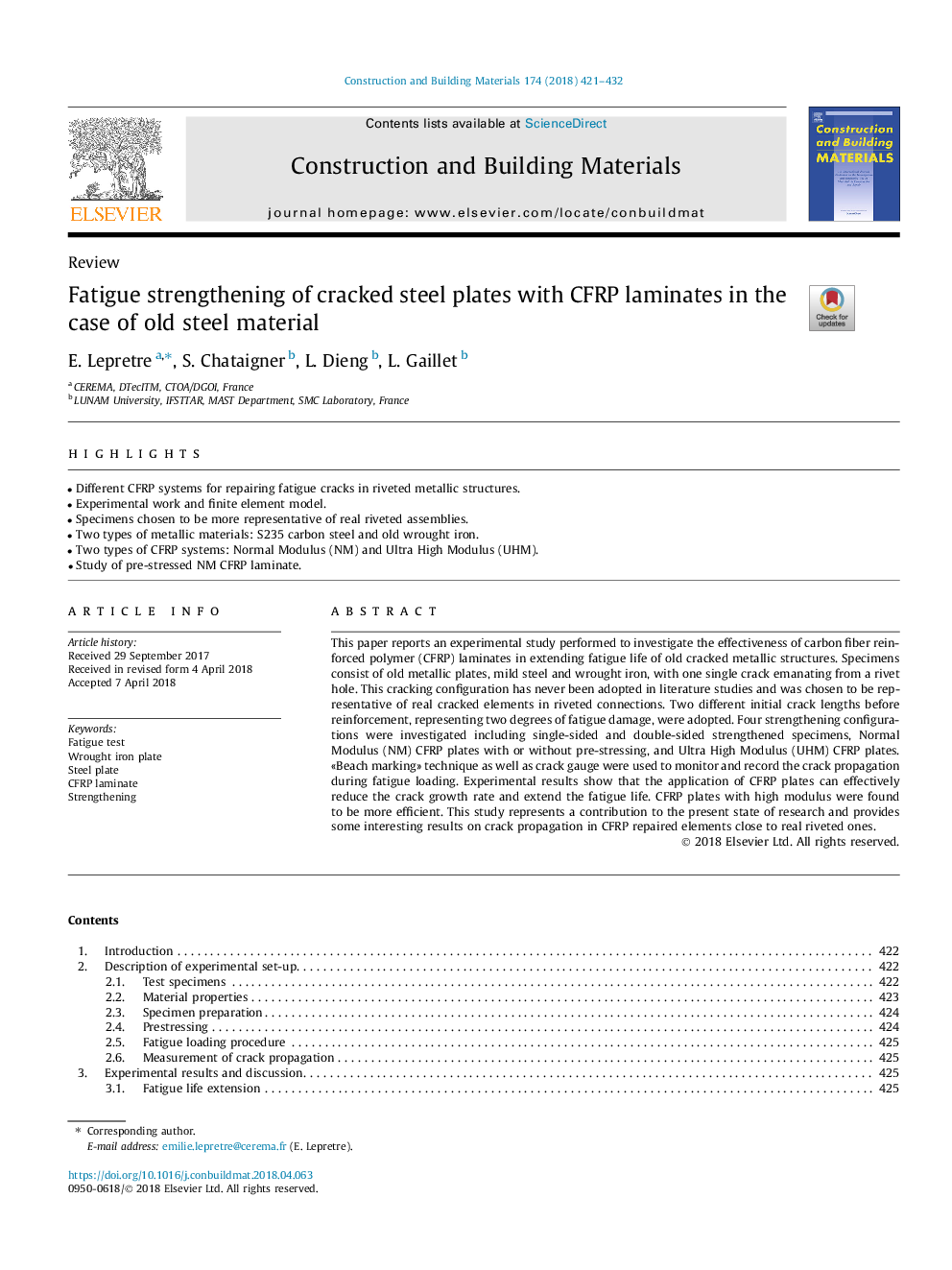| Article ID | Journal | Published Year | Pages | File Type |
|---|---|---|---|---|
| 6713318 | Construction and Building Materials | 2018 | 12 Pages |
Abstract
This paper reports an experimental study performed to investigate the effectiveness of carbon fiber reinforced polymer (CFRP) laminates in extending fatigue life of old cracked metallic structures. Specimens consist of old metallic plates, mild steel and wrought iron, with one single crack emanating from a rivet hole. This cracking configuration has never been adopted in literature studies and was chosen to be representative of real cracked elements in riveted connections. Two different initial crack lengths before reinforcement, representing two degrees of fatigue damage, were adopted. Four strengthening configurations were investigated including single-sided and double-sided strengthened specimens, Normal Modulus (NM) CFRP plates with or without pre-stressing, and Ultra High Modulus (UHM) CFRP plates. «Beach marking» technique as well as crack gauge were used to monitor and record the crack propagation during fatigue loading. Experimental results show that the application of CFRP plates can effectively reduce the crack growth rate and extend the fatigue life. CFRP plates with high modulus were found to be more efficient. This study represents a contribution to the present state of research and provides some interesting results on crack propagation in CFRP repaired elements close to real riveted ones.
Related Topics
Physical Sciences and Engineering
Engineering
Civil and Structural Engineering
Authors
E. Lepretre, S. Chataigner, L. Dieng, L. Gaillet,
